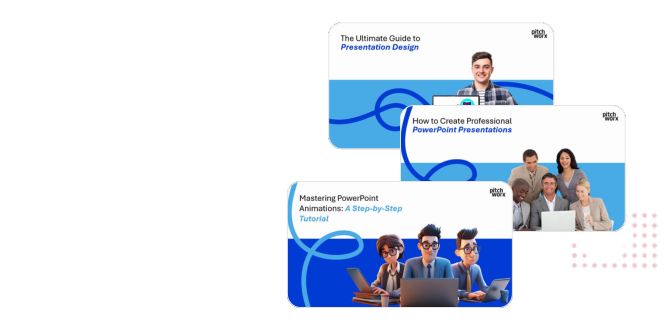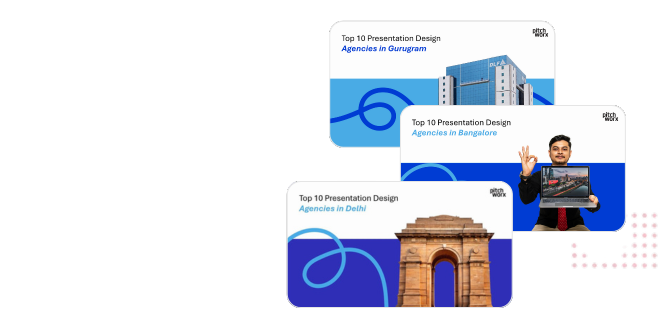
Presentations during office review meetings are an essential part of professional communication. Whether you’re showcasing your progress, proposing new ideas, or reviewing team performance, the way you present can significantly impact how your work is perceived. Creating a presentation that leaves a lasting impression, engages your audience, and clearly communicates your message is crucial.
In this blog, we’ll walk you through practical strategies for creating impactful presentations tailored specifically for office review meetings. From crafting a compelling narrative to designing visually engaging slides and practicing your delivery, these tips will help you nail your next presentation.
1. Understanding Your Audience
A successful presentation begins with a deep understanding of your audience. In an office review meeting, your audience might include team members, supervisors, department heads, or other stakeholders. Each of these groups will have different expectations and priorities, and it’s important to tailor your presentation to address those.
- Identify their expectations: What does your audience want to hear? Do they want progress updates, strategic recommendations, or solutions to specific problems?
- Know their level of expertise: If you’re presenting to senior leadership, you may need to focus on high-level insights. For peers or team members, more detailed explanations may be required.
- Address their pain points: If your audience is dealing with specific challenges, ensure your presentation addresses these concerns directly.
By keeping your audience in mind from the outset, you can craft a presentation that resonates with them and drives home your key points.
2. Crafting a Compelling Narrative
At the heart of every great presentation is a compelling story. Instead of jumping straight into the data or slides, think of your presentation as a narrative that takes the audience on a journey from problem to solution or from point A to point B.
- Start with a strong introduction: Your opening should grab attention. Clearly state the purpose of the meeting and what you aim to achieve through your presentation.
- Organize your content logically: Break your presentation into clear sections. Start by identifying the problem or context, follow it with the main content or solution, and finish with a conclusion or call to action.
- Use supporting evidence: Back up your points with data, statistics, or case studies. This adds credibility and helps your audience follow your reasoning.
- Tell a story: Personal stories or real-life examples can make your presentation more relatable and memorable.
By keeping your audience in mind from the outset, you can craft a presentation that resonates with them and drives home your key points.
3. Designing Visually Appealing Slides
The design of your slides can either support or detract from your message. Visually engaging slides not only make your content more accessible but also help keep your audience’s attention.
- Stick to a clean design: Choose a template that reflects professionalism and aligns with your company’s branding. Avoid cluttered slides or overly complex designs that can distract from your content.
- Limit text: Too much text on a slide can overwhelm your audience. Use bullet points to break down your ideas and stick to a few key points per slide.
- Use high-quality visuals: Incorporate images, charts, and graphs to make your presentation visually engaging. Visuals help explain complex ideas and make your slides more appealing.
- Consistent color scheme: Ensure your color scheme is easy on the eyes and maintains brand consistency. Use contrasting colors for text and background to make information easier to read.
- Font and typography: Use readable fonts and appropriate sizes for both headlines and body text. Aim for clarity over style.
4. Practicing and Rehearsing Your Delivery
Creating a great presentation is only half the battle—you also need to deliver it confidently. Rehearsing your presentation will ensure that you can speak clearly, stay on time, and manage any unexpected disruptions.
- Practice out loud: Reading your slides in your head doesn’t give you a true sense of your pacing. Practice speaking aloud so you can adjust your tone, volume, and speed.
- Time yourself: Make sure you can deliver your presentation within the allotted time. It’s better to finish slightly early than to run over time.
- Rehearse with feedback: Practice in front of a colleague or friend and ask for feedback. They can provide insights into areas where you may need to clarify your message or adjust your delivery.
- Control your nerves: Practicing repeatedly helps reduce nerves. Consider techniques like deep breathing or mindfulness to calm your mind before the actual presentation.
5. Engaging Your Audience
Engagement is key to ensuring that your message sticks with your audience. Passive listening can lead to distractions, but interactive elements keep the audience involved and attentive.
- Make eye contact: Eye contact establishes a connection with your audience, making them feel engaged.
- Ask questions: Pose rhetorical or direct questions to stimulate thinking and interaction.
- Encourage feedback: Depending on the format of the meeting, invite questions or input from the audience.
- Use strategic pauses: Pausing can emphasize a point and give the audience time to reflect on what you’ve just said.
6. Incorporating Data and Insights
Numbers and data often speak louder than words. Back up your points with credible data, whether it’s from internal reports, industry benchmarks, or third-party sources.
- Use graphs and charts: Instead of long lists of statistics, show your data in visually engaging formats like pie charts, bar graphs, or infographics.
- Keep it simple: Don’t overwhelm your audience with too much data. Choose the most important figures that support your key message.
- Provide context: Ensure your audience understands the significance of the data you’re presenting. Provide clear explanations and link the data to your conclusions.
7. Managing Q&A Sessions
After your presentation, you’ll likely have to handle questions from the audience. A successful Q&A session helps reinforce your message and clears up any doubts.
- Be prepared: Anticipate common questions and prepare clear, concise answers.
- Stay calm: If a question catches you off guard, take a moment to think before responding.
- Clarify if needed: Don’t hesitate to ask for clarification if a question isn’t clear.
8. Conclusion and Call-to-Action
End your presentation with a strong conclusion that reinforces your key points and provides a clear takeaway for your audience. Consider using a call-to-action (CTA) that prompts your audience to act on your recommendations or ideas.
- Summarize key points: Recap the main takeaways from your presentation in a brief summary.
- Encourage action: Whether it’s scheduling a follow-up meeting, providing feedback, or implementing a suggestion, give your audience a clear action to take next.
- End on a positive note: Thank your audience for their time and engagement.
Conclusion
Creating the perfect presentation for office review meetings requires thoughtful preparation, a clear narrative, and polished delivery. By understanding your audience, organizing your content effectively, and practicing your delivery, you can communicate your ideas with confidence and clarity.
At Pitchworx, we specialize in helping professionals craft visually compelling and impactful presentations that make a lasting impression. To see examples of how we’ve helped businesses elevate their presentations, feel free to check out our portfolio. Whether you’re looking for PowerPoint design services, pitch deck design, or corporate presentation services, Pitchworx is here to help you create a presentation that stands out.
Ready to take your presentations to the next level? Contact us today to learn more about how we can help!









